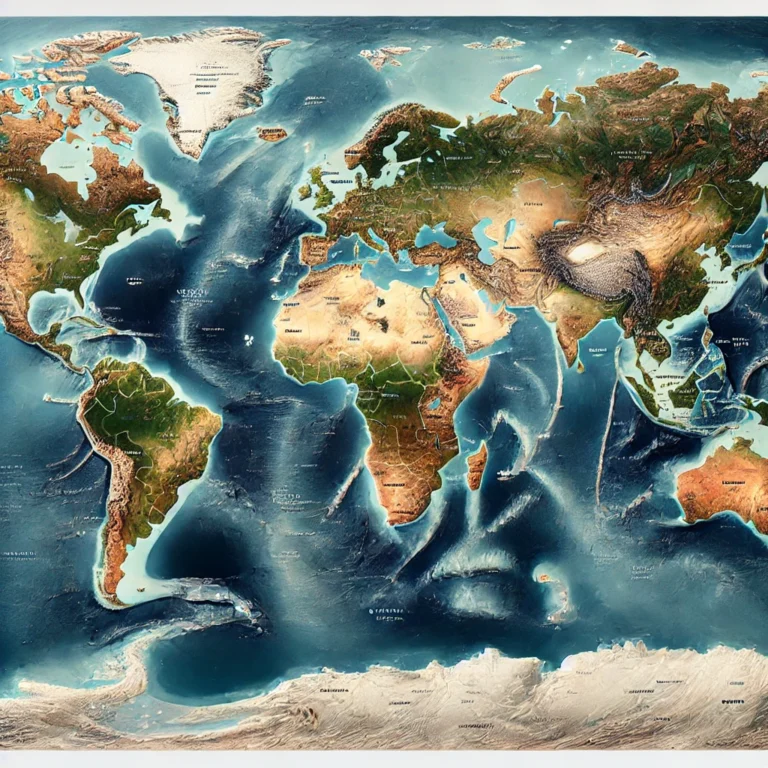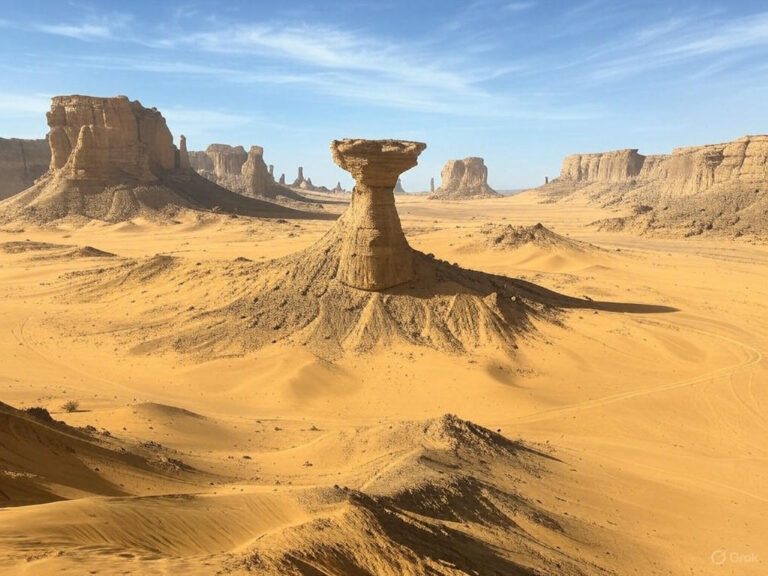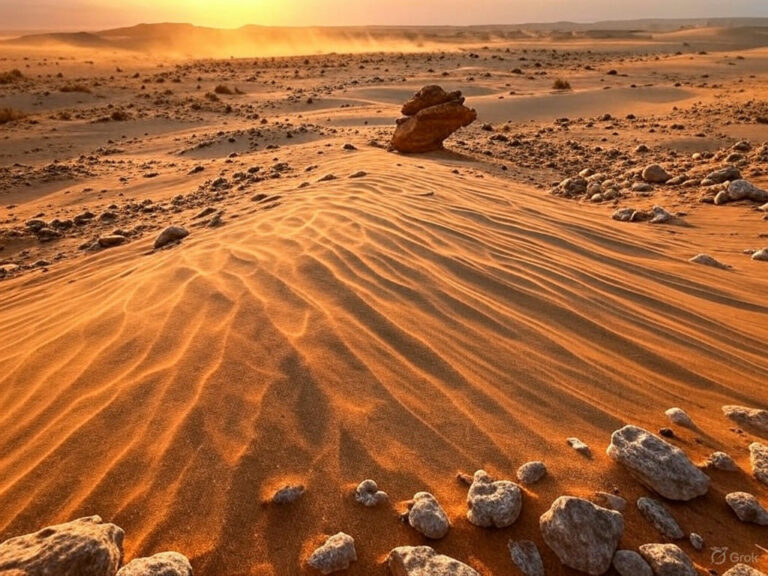Tensional Forces
Imagine you are pulling apart a chocolate bar slowly with both hands. At first, tiny cracks appear, and then—snap!—it breaks along a jagged line. Now, replace the chocolate with the Earth’s crust, and what you have just witnessed is a process called crustal fracture.
Deep within the Earth, tremendous forces are always at play, shaping the land we live on. Among these, tensional forces play a key role in pulling apart large sections of the crust, creating fractures, faults, and even reshaping entire landscapes over millions of years.
Crustal Fracture
The Earth’s crust is not a single unbroken shell; instead, it’s made of large rock masses that are continuously stressed by internal forces. When these forces pull apart (tensional forces) or push together (compressional forces) beyond the rock’s ability to bend, something dramatic happens—the crust breaks.
This breaking and displacement of rock along a plane is called a crustal fracture.
- If there is no significant movement along the break, it is simply a fracture or a joint.
- If the rocks actually move along the fracture, it is called a fault.
Faults and Their Types
When the crustal rocks are displaced, due to tensional movement caused by the Endogenetic forces along a plane is called fault & that plane is called fault plane.
These movements define the different types of faults.
1. Normal Fault
This occurs when tensional forces stretch the crust apart, causing one block of rock to drop downward relative to the other.

Effect: The area between the fault lines extends (becomes wider).
📍 Example: The Great Rift Valley in Africa is a classic case of a normal fault where the land is literally being pulled apart.
2. Reverse Fault
Here, if you see at the figure it seems compressional forces push two blocks towards each other, forcing one to rise over the other.
🚨 But wait! Shouldn’t compression create folds instead of faults?
Good question! Normally, compression bends rock layers into folds, but if the rocks are already fractured, they cannot bend anymore. Instead, one block thrusts over the other, creating a reverse fault.

Effect: The land shortens and becomes more compact.
📍 Example: The Himalayas were formed due to massive reverse faulting as the Indian Plate pushed into the Eurasian Plate.
3. Strike-Slip Fault (Lateral Fault)
Now, imagine two people walking side by side, but suddenly one moves ahead while the other lags behind. This sideways displacement is what happens in a strike-slip fault.
Here, the rock blocks move horizontally past each other instead of moving up or down.
Depending on the direction of movement, these faults can be:
- Left-lateral (Sinistral): If the block on the far side moves to the left.

- Right-lateral (Dextral): If the block on the far side moves to the right.

Real-World Analogy: Imagine placing your hands together and rubbing them in opposite directions—your hands remain level, but they slide past each other.
📍 Example: The San Andreas Fault in California, which is responsible for many earthquakes in the region, is a classic strike-slip fault.
Difference between compression and tensional Forces:
As we have already studied that in plate tectonics, forces acting on the Earth’s crust determine the formation of various landforms and the two of the most fundamental types of stress are compressional forces and tensional forces. These operate in opposite directions and lead to distinct geological features and processes. Let’s see the distinction between the two:
🔄 1. Basic Definition
| Aspect | Compressional Forces | Tensional Forces |
|---|---|---|
| Meaning | Forces that push rocks towards each other | Forces that pull rocks away from each other |
| Direction of Force | Acting towards the center from both sides | Acting outwards in opposite directions |
🗻 2. Effect on Earth’s Crust
| Aspect | Compressional Forces | Tensional Forces |
|---|---|---|
| Crustal Response | Crust is shortened and thickened | Crust is stretched and thinned |
| Deformation Type | Leads to folding, faulting, and crustal uplift | Leads to fracturing, normal faulting, and crustal subsidence |
🏔️ 3. Landforms Created
| Aspect | Compressional Forces | Tensional Forces |
|---|---|---|
| Major Landforms | – Fold Mountains (e.g., Himalayas) – Reverse and Thrust Faults – Anticlines and Synclines | – Block Mountains (Horst) and Rift Valleys (Graben) – Fault Scarps – Linear valleys |
| Examples | Himalayas (India), Andes (South America), Alps (Europe) | East African Rift Valley, Rhine Rift Valley, Basin and Range Region (USA) |
🧭 4. Plate Tectonic Setting
| Aspect | Compressional Forces | Tensional Forces |
|---|---|---|
| Tectonic Plate Boundary | Convergent Boundaries (plates moving toward each other) | Divergent Boundaries (plates moving apart) |
| Process Involved | Subduction, Continental Collision | Sea-Floor Spreading, Rift Formation |
📊 5. Associated Fault Types
| Aspect | Compressional Forces | Tensional Forces |
|---|---|---|
| Type of Fault | Reverse Fault, Thrust Fault | Normal Fault |
| Stress Type | Compressional Stress | Tensional Stress |
Let me elaborate this point a bit:
Crustal Deformation: Force Type vs. Resulting Landform
| Force Type | Direction of Stress | Primary Deformation | Outcome if Rock is… |
|---|---|---|---|
| Compressional | ➡️⬅️ Pushing together | Folding (if ductile) | Bends into folds like anticlines & synclines |
| Faulting (if brittle) | Reverse/Thrust faults if rocks can’t bend | ||
| Tensional | ⬅️➡️ Pulling apart | Fracturing & Faulting | Normal faults; crust stretches and fractures |
🧱 Compression ➡️ Folding or Faulting?
- If rocks are ductile (plastic-like): They bend, forming folds.
- If rocks are brittle or already fractured: They break, forming reverse faults.
🔧 Tension ➡️ Fracturing
- Pulls crust apart → fractures → normal faults.
- Typical in divergent boundaries, where new crust is created.
📌 Summary in Simple Terms:
Compressional forces act like a vice, squeezing the Earth’s crust from both sides and forming mountains and folds.
Tensional forces act like a pulling rope, stretching the crust and causing it to break and sink, forming rifts and valleys.





3 Comments